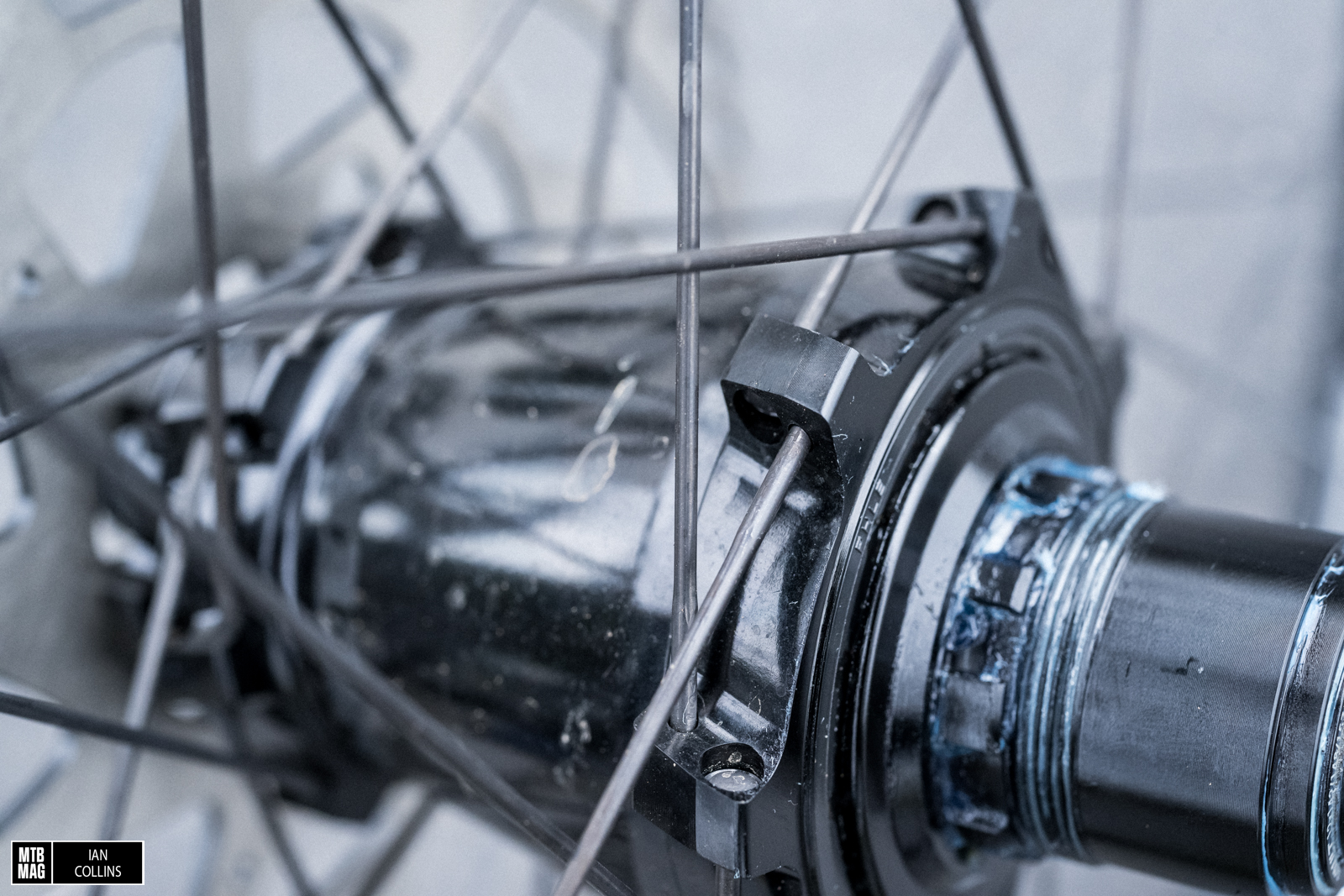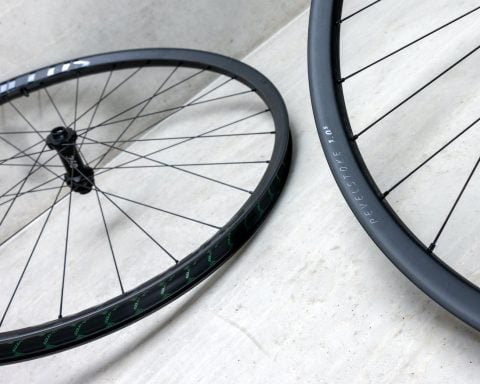Today, Race Face is announcing an updated version of the Turbine aluminum wheelset, which I am fortunate enough to have been riding for the last few weeks. While on the surface, the wheels don’t look drastically different than their predecessor, there are some key updates that are very much worth discussing in detail. Let’s dive in…
Details
- 27.5″, mixed (tested) and 29″ available
- Boost (tested) and Super Boost spacing
- 6-bolt brake interface
- MS, XD (tested) and HG drivers available
- 28 hole front and rear
- 30mm rim width
- Straight pull double butted spokes
- Alloy nipples
- Front/rear specific rim profiles with 4mm offset
- 1895 grams claimed (29″) / 1850 grams (our scale, mixed setup with tubeless valves and tape)
- Lifetime warranty
- $799 USD
Starting with the rims, the new Turbines see a 4mm offset front and rear for a greatly improved bracing angle and more even tension between the drive and non-drive side. Both of these design choices improve the overall integrity of the wheel as a complete unit.
A new aspect of the rim’s profile is its wider rim wall. By making this part of the rim effectively more blunt, it essentially reduces the chances of having it cut through your tire and thus is less likely to pinch flat. It’s also thicker and therefore should be better at warding off dents and flat spots.
Another interesting design aspect to the new rims is that their front and rear specific design is aimed at improving ride quality. While both rims are 30mm wide, the front rim is 18mm deep and the rear is 20mm deep. The shallower front profile should assist in providing a more comfortable and compliant ride, whereas that is less of a concern out back and instead the greater concern is strength and rigidty, which are increased at the rear wheel due to the taller profile.
Central to the Turbine wheelset are Race Face’s burly Vault hubs, which have garnered a solid reputation over the years. An interesting design aspect to them – in addition to their massive size – is the fact that the main bearings are spaced very widely apart, thus improving their longevity and reducing the chance of rear axle failure. Compared to the popular DT Swiss 240 hub, the Vault’s main bearings have a stance that is roughly 10mm wider.
The Vault hubs are completely designed around straight pull spokes. 28 of them front and rear to be exact.
While the drive side flange is quite large on the rear hub, the opposite is true for the front hub, as shown above. It’s worth pointing out that both the front and rear hubs are tool free, so the end caps and driver bodies can all be removed by hand for a quick service.
With the driver body removed, you can see the 6 pawls revealed. Each pawl has two teeth for increased bite/contact and the layout is such that there are two opposing groups of three pawls with only one set engaged at a time. Also note the large labyrinth seal which is easily removable for service and access to the springs.
The steel drive ring has 60 teeth for blazing fast 3º engagement. Also note that the Vaults feature oversized 6902 Enduro bearings throughout.
On the trail
The Turbines arrive taped with valves installed and I found that installing tires and inflating them with a floor pump was a breeze. Right away I noticed and appreciated the speedy engagement. The hub bearings were smooth and the size of the hub shells are something to behold. Given that these wheels feature aluminum rims, they offered a very nice on-trail feel with a great balance of stiffness and compliance – especially given their low-ish 28 hole spoke count. While some aluminum wheelsets can feel a bit “dead” on trail compared to carbon fiber options, this was not the case. Rather, the ride quality was such that the Turbines are precisely the kind of wheelset that has me increasingly skeptical about the case for carbon wheelsets in general – particularly from a value perspective.
While it is a bit premature for a full long term review, I have had a handful of rides in reasonably rugged terrain and I’ve cased a handful of jumps without the Turbines flinching one bit. I’ve also run the tires well below my standard pressure and haven’t managed to flat my tires on them. How well does the wider rim wall prevent flats? Much like the claim regarding the shallower front rim profile exhibiting a more gentle ride quality, it’s difficult to gauge on how well certain design aspects work in the real world, particularly when the differences measure within a few millimeters. In theory however, both of those things do make sense and the wheels exhibit an excellent ride quality. If I had to nit pick and look for any sort of shortcoming, I’d likely point to the straight pull spokes. Surely they may have helped Race Face achieve their goals for the Vault hubs from a design standpoint and they do have their merits and demerits. However, I personally find them annoying to deal with in a truing stand. All told however, 1,850 grams is quite light for an aluminum wheelset with such burly hubs, so that’s another positive.
Overall
As mentioned prior, it will take more time on the trails to make a broader assessment of the Turbines, but so far so good. Regarding where they stand from a value perspective, I think they are a great deal. $799 USD for a well thought out premium aluminum wheelset rolling on high end hubs boasting a realistic lifetime warranty is an absolute bargain. That they offer a ride quality that will likely have you second guessing the utility of carbon fiber wheels just makes them that much more convincing.























Mi chiedo la motivazione di questa scelta tecnica, anche se all'atto pratico non cambia nulla.